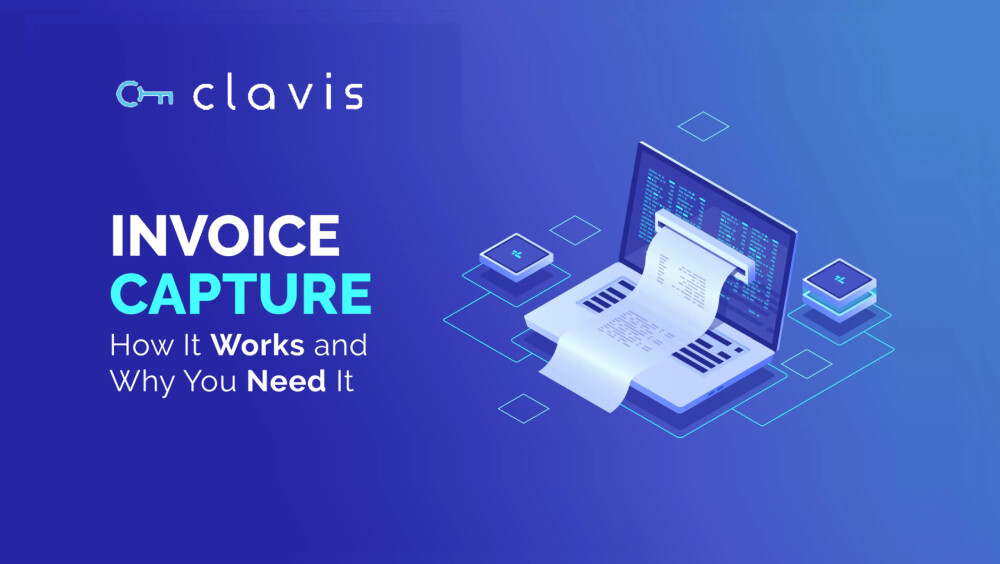Mastering Invoice Capturing with Intelligent Document Processing (IDP): A Comprehensive Guide
In the realm of business operations, efficiency reigns supreme. Streamlining processes is not just a desire but a necessity to stay competitive. One such critical process is invoice capturing, where errors and delays can lead to significant financial repercussions. Fortunately, with the advent of Intelligent Document Processing (IDP), businesses can now automate and optimise their invoice-capturing workflows like never before.
Understanding Intelligent Document Processing (IDP)
Intelligent Document Processing (IDP) is an advanced technology that combines Optical Character Recognition (OCR), Natural Language Processing (NLP), and machine learning algorithms to automate the extraction, classification, and interpretation of data from various documents, including invoices, contracts, receipts, and forms. Unlike traditional OCR systems, IDP goes beyond simple text recognition and understanding the context, semantics, and structure of documents to extract actionable insights.
The Benefits of IDP for Invoice Capturing
Implementing IDP for invoice capturing offers a multitude of benefits for businesses:
- Enhanced Accuracy: IDP leverages AI and machine learning to capture and interpret data from invoices accurately, significantly reducing errors associated with manual data entry.
- Improved Efficiency: By automating repetitive tasks such as data extraction and validation, IDP accelerates the invoice-capturing process, enabling faster turnaround times and increased productivity.
- Cost Savings: IDP eliminates manual intervention in invoice processing, leading to cost savings associated with labour, time, and resources.
- Scalability: IDP is highly scalable, capable of processing large volumes of invoices without compromising accuracy or performance, making it suitable for businesses of all sizes.
- Compliance and Security: IDP ensures compliance with regulatory requirements and data security standards by maintaining accurate records and protecting sensitive information.
Components of an IDP Solution for Invoice Capturing
An effective IDP solution for invoice capturing typically comprises the following components:
- Document Capture: The document capture module is responsible for ingesting invoices from various sources, including email, scanners, and document management systems, and converting them into digital formats for processing.
- OCR and Data Extraction: The OCR engine extracts text and data from scanned invoices, while the data extraction module identifies and captures relevant information such as invoice numbers, dates, line items, and totals.
- Classification and Validation: The classification module categorises invoices based on predefined criteria, while the validation module verifies the accuracy and integrity of extracted data through rule-based checks and validation algorithms.
- Integration Capabilities: IDP solutions from Clavis integrate with existing accounting systems, ERP software, and other business applications to facilitate data exchange and workflow automation.
- Analytics and Reporting: Advanced analytics and reporting features provide insights into invoice processing metrics, performance trends, and areas for optimisation, enabling data-driven decision-making and continuous improvement.
Implementing IDP for Invoice Capturing: Best Practices
To maximise the benefits of IDP for invoice capturing, consider the following best practices:
- Define Clear Objectives: Define your objectives and expectations for implementing IDP, including specific business goals, performance targets, and ROI metrics.
- Engage Stakeholders: Involve key stakeholders, including finance, IT, and procurement teams, in the planning and implementation to ensure alignment and buy-in across the organisation.
- Choose the Right Solution: Select an IDP solution that aligns with your business requirements, scalability needs, and budget constraints, considering factors such as OCR accuracy, data extraction capabilities, and integration options.
- Customize and Configure: Customize and configure the IDP solution to meet your unique invoice-capturing workflows and business rules, including data extraction templates, validation rules, and integration mappings.
- Provide Training and Support: Offer comprehensive training and ongoing support to users and administrators to ensure they understand how to use the IDP solution effectively and troubleshoot common issues.
- Monitor Performance: Continuously monitor the performance of the IDP solution, tracking key metrics such as processing time, accuracy rates, and exception handling, and proactively addressing any issues or bottlenecks.
- Iterate and Improve: Iterate on the IDP implementation iteratively, incorporating feedback from users and stakeholders, and leveraging insights from analytics and reporting to identify opportunities for optimisation and improvement.
Advanced Strategies for IDP-Enabled Invoice Capturing
Once you’ve successfully implemented IDP for invoice capturing, consider leveraging these advanced strategies to optimise your workflows further:
- Automated Invoice Matching: Implement automated invoice matching algorithms to reconcile invoices with purchase orders and receipts, streamlining the three-way matching process and reducing discrepancies.
- Supplier Portal Integration: Integrate your IDP solution with a supplier portal or electronic invoicing platform to enable suppliers to submit invoices electronically, reducing manual data entry and accelerating invoice processing.
- Dynamic Workflow Routing: Implement dynamic workflow routing based on invoice characteristics, such as invoice amount, vendor, and payment terms, to route invoices to the appropriate stakeholders for approval and processing automatically.
- Predictive Analytics: Utilize predictive analytics models to forecast invoice processing volumes, identify seasonal trends, and optimise resource allocation and capacity planning.
Future Trends in IDP and Invoice Capturing
Several emerging and current trends are poised to shape the future of IDP and invoice capturing. These include:
- Artificial Intelligence and Machine Learning: Advancements in AI and machine learning technologies will continue to improve the accuracy, efficiency, and automation capabilities of IDP solutions, enabling more intelligent document processing and decision-making.
- Hyperautomation: Hyperautomation, which combines robotic process automation (RPA) with AI and machine learning, will drive further automation of end-to-end invoice capturing workflows, from document ingestion to data extraction to workflow orchestration.
- Blockchain Integration: Integration with blockchain technology will enhance the security, transparency, and traceability of invoice processing by providing a decentralised and tamper-proof ledger of transactions.
- Natural Language Understanding (NLU): NLU capabilities will enable IDP solutions to understand and interpret unstructured data, such as email communications and handwritten notes, enhancing their ability to process diverse document types and formats.
How Can Clavis Technologies Help You with Your Document Processing Needs?
Clavis Technologies offers a comprehensive Intelligent Document Processing (IDP) solution that completely transforms how organisations handle document-based information. With an IDP solution from Clavis Technologies, businesses can streamline and automate their document processing workflows, saving time, reducing errors, and improving efficiency.
Through advanced OCR (Optical Character Recognition) technology and machine learning algorithms, Clavis Technologies accurately extracts data from various documents, including invoices, contracts, forms, and more. This data extraction process is highly accurate, even with complex layouts and handwritten text, consistently ensuring reliable results.
Additionally, Clavis Technologies offers seamless integration capabilities, enabling the IDP solution to integrate with existing systems and workflows, such as accounting software and ERP systems. This integration streamlines document processing workflows, eliminates manual data entry, and enhances overall productivity.
Final Thoughts
Intelligent Document Processing (IDP) represents a paradigm shift in the way businesses capture, process, and leverage document-based information, particularly in the realm of invoice processing. By harnessing the power of IDP, organisations can streamline their invoice-capturing workflows, improve accuracy and efficiency, and unlock valuable insights hidden within their documents.
ERP vs CRM: Key Differences, Strengths, and How Clavis’ ERP Drives Organizational Success
In the digital age, businesses strive to leverage advanced tools to streamline operations, boost productivity, and foster better customer relationships. Two pivotal software solutions that play a significant role in achieving these goals are Enterprise Resource Planning (ERP) and Customer Relationship Management (CRM) systems. While these tools may seem similar at first glance, they serve distinct purposes and offer unique benefits, and it is important to understand why you may need one or the other—or both in tandem.
1. What is ERP?
ERP stands for Enterprise Resource Planning, a comprehensive software suite that manages and integrates core business processes. These processes often include:
- Finance and accounting
- Human resources
- Supply chain management
- Inventory and order management
- Manufacturing
ERP systems centralise business data, allowing various departments to collaborate seamlessly and make informed decisions based on real-time insights.
Core Features of ERP Systems
- Centralized Data Management: Consolidates information from all business departments into one platform.
- Process Automation: Automates repetitive tasks to improve efficiency.
- Scalability: Can grow with your business, accommodating new functionalities as needed.
- Compliance Support: Helps organisations meet regulatory requirements.
- Advanced Analytics: Provides detailed insights to support strategic decision-making.
2. What is CRM?
CRM, or Customer Relationship Management, is software that focuses on managing a company's interactions with current and potential customers. The primary goal of a CRM system is to improve customer satisfaction, retention, and acquisition through personalised communication and efficient management of sales and marketing activities.
Core Features of CRM Systems
- Contact Management: Maintains detailed records of customer interactions and preferences.
- Sales Pipeline Tracking: Manages leads and monitors the sales process.
- Marketing Automation: Facilitates email campaigns, social media management, and more.
- Customer Support: Enhances post-sale services through ticketing systems and live chats.
- Data-Driven Insights: Helps identify trends to fine-tune marketing and sales strategies.
3. ERP vs. CRM: Key Differences
While ERP and CRM are essential for business success, they cater to different aspects of operations.
|
Feature |
ERP |
CRM |
|
Primary Focus |
Internal processes and operational efficiency |
Customer interactions and relationships |
|
Key Functions |
Accounting, supply chain, HR, inventory |
Sales, marketing, customer service |
|
Target Audience |
Internal stakeholders |
Sales, marketing, and customer support teams |
|
Data Integration |
Focuses on consolidating operational data |
Specialises in customer-centric data |
|
Scalability |
Enterprise-wide |
Primarily focused on customer management |
4. The Strengths of ERP Systems
ERP systems are the backbone of operational efficiency. Their key strengths include:
- Holistic Business View: ERP provides a comprehensive view of business operations by integrating data across departments.
- Cost Reduction: Automating processes reduces manual labour and errors, saving time and money.
- Improved Compliance: Centralized data simplifies regulatory reporting and ensures adherence to standards.
- Inventory Optimization: Enhances inventory management, reducing waste and ensuring timely procurement.
- Agile Decision-Making: Real-time data insights help leaders make swift, informed decisions.
5. The Strengths of CRM Systems
CRM systems shine in the realm of customer relationship management, with benefits such as:
- Enhanced Customer Insights: Tracks and analyses customer preferences to tailor interactions.
- Improved Customer Retention: Personalization and timely communication foster loyalty.
- Streamlined Sales Processes: Automates lead management, reducing manual intervention.
- Marketing Optimization: Helps segment audiences for targeted campaigns.
- Boosted Collaboration: Facilitates alignment between sales and marketing teams.
6. ERP and CRM: Complementary Tools
Though distinct, ERP and CRM systems are complementary and often integrated to deliver maximum value. For instance:
- CRM manages the front-end relationship with customers, while ERP handles back-end processes like inventory and order fulfilment.
- Together, they provide a seamless flow of information, ensuring that customer-facing teams have accurate, up-to-date data on orders and services.
7. Clavis' ERP: The Ultimate Solution for Organizational Success
Clavis' ERP stands out as a robust ERP solution designed to address the multifaceted needs of modern businesses. Here’s how it can drive your organisation's success:
a) Comprehensive Integration
Clavis' ERP integrates seamlessly with existing systems, including CRM platforms, to unify your business processes.
b) Real-Time Data Analytics
With Clavis' ERP, decision-makers can access advanced analytics tools that offer actionable insights into performance, trends, and potential opportunities.
c) Tailored Functionality
Highly customisable to suit the unique needs of businesses across industries, Clavis' ERP works for all—from manufacturing to retail and more.
d) Enhanced User Experience
The platform boasts an intuitive interface, making it easy for employees to adopt and use effectively.
e) Cloud Capabilities
Leverage cloud-based deployment for flexibility, scalability, and cost savings.
9. Choosing the Right Solution for Your Business
When deciding between ERP and CRM—or opting for an integrated approach—consider the following:
- Business Goals: Identify whether your primary focus is operational efficiency (ERP) or customer relationships (CRM).
- Scalability: Choose a solution that can grow with your business.
- Budget: Evaluate the total cost of ownership, including deployment and maintenance.
- Customization: Ensure the platform can be tailored to your specific needs.
Final Thoughts
ERP and CRM systems are indispensable for businesses aiming to optimise operations and enhance customer relationships. While they serve distinct purposes, their integration offers unparalleled value. With Clavis' ERP, you gain a robust tool that streamlines your operations and integrates seamlessly with CRM systems to provide a holistic business solution.
Some other posts you might be interested in.

Mauritius and MNIC 3.0 – Driving the Digital Transformation in East Africa
On February 26, 2024, the Prime Minister of Mauritius, Mr Pravind Kumar Jugnauth, unveiled MNIC 3.0, the latest iteration of the Mauritius National Identity card. Speaking on the occasion, the Prime Minister stated, “The new card reflects our commitment to modernity,...

CMS and DAM: Why your business needs both
With the enhancement of technology, consumers require flawless experiences in everything they do. Be it at home, with their smartphone, car, or work-space, the ease of handling tasks should be at the snap of a finger. To have a seamless experience at the workspace,...

15 Applications of Blockchain in Healthcare
"Blockchain" refers to a shared irreversible record of a chain of transactions, each of which is made up of one block, and which is held together by cryptographic keys ("hashes"). These keys or signatures are maintained in shared ledgers and connected by a network of...
